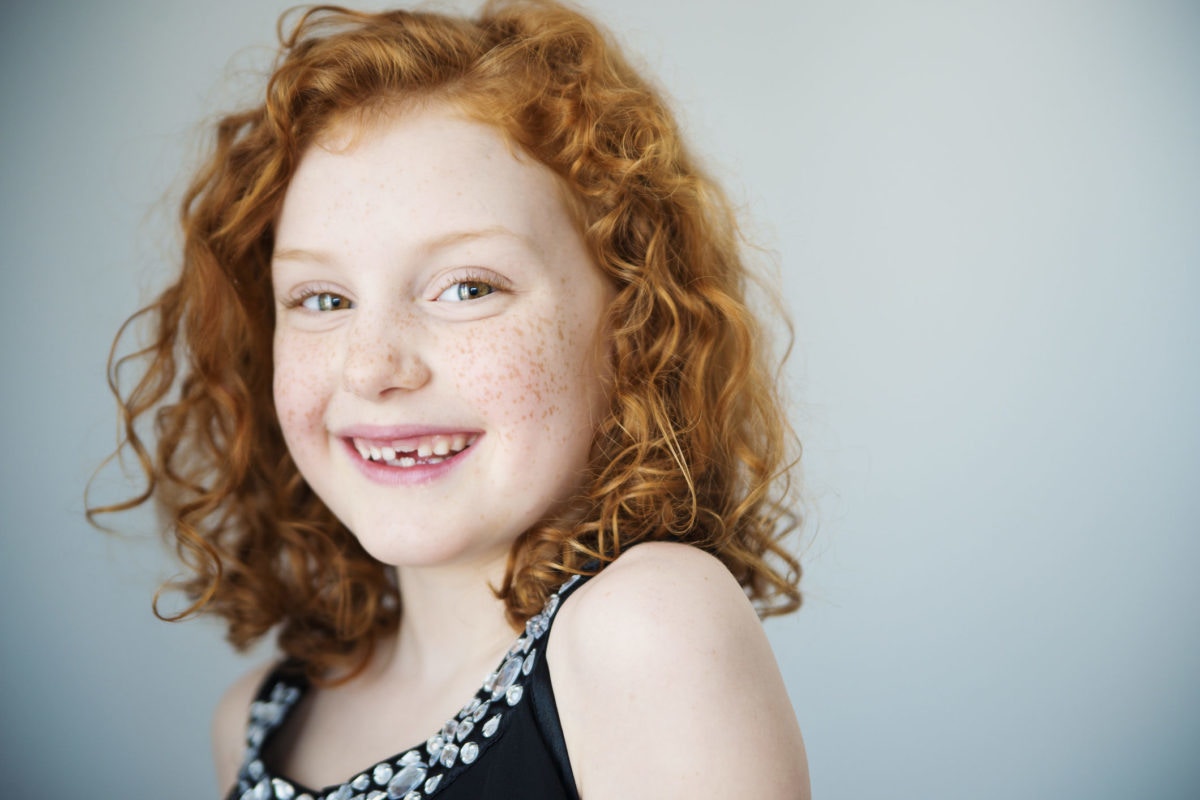Growing up, I would have given anything to have had naturally curly hair. I’d stare at the girls whose soft waves formed bouncy crowns of awesomeness and daydream about a life with spiral tresses. I spent every cent of my babysitting money on salon perms and sticky mousse that gave me an imposter look. But it wasn’t the same. My hair grew fast and the perms only lasted so long. Before I knew it, I had straight hair again. I wasn’t aware at the time, but most curly-haired girls would have given anything to have had straight hair like mine. And it seems this trend has continued.
According to a global study conducted by Edelman Berland and H&E (commissioned by Dove), only 10 percent of women feel proud of their curls and just four out of 10 curly-haired girls think their hair is beautiful. The findings revealed that girls as young as five are six times more likely to have an aversion to their hair if it’s curly. They are nine times more likely to believe that if they had straighter hair they would be happier and have more friends. Why?
It's a question that has many answers, and one that authors have been tackling in various books for years. Author Alonda Williams shares a familiar story in “Penny and the Magic Puffballs.” Penny desperately wants to wear her hair down like the other girls in her class but can’t help but wonder why her hair isn’t straight. In “Spaghetti in a Hot Dog Bun,” author Maria Dismondy introduces us to curly red-head Lucy, a girl who is constantly teased for the way she looks. Both characters struggle with having curly hair and wishing it was straight. It’s a common theme in books and in the real world.
Atara Twersky, New York-based working mom and author of the new children’s book “Curlee Girlee,” says that curls can be viewed as messy, unruly, and unpredictable in certain weather. As we get older, curly hair can even be viewed as unprofessional. She was inspired to write “Curlee Girlee” by her little girl Ari, who has a mass of curly hair in their otherwise straight-haired family. “I wanted Ari to love her curly hair (and by extension all her unique features) and not ever feel the need to conform to society’s fictitious standards of beauty,” says Twersky.
While writing the book, Twersky realized that there are many little girls out there who need to learn to love all their unique features, whether it’s their hair, their size, their shape, or any other quality that makes them remarkable or different. “Curlee Girlee, with her determined, feisty nature, ultimately proves to be a character with self-reflection and good judgment, and I think that is why she has been resonating with children everywhere, curly-haired, straight-haired, girls, even boys,” Twersky says.
So how can young girls embrace their differences and learn to appreciate their curls? Twersky says it starts with learning to love your physical characteristics. Curls are fun and beautiful, and they do lend character. “I have found that many Curlee Girlees actually have ‘curly’ personalities: fun, active, different. I think having curly hair definitely affects who we are,” says Twersky.
The book’s larger message is that we need to teach children starting when they are very young to love who they are and all their unique features. “They cannot wake up at 12, or 14, or 18 and be told ‘love yourself.’ We need to change their inner dialogue when they are very young. That is how we will create confident women of tomorrow,” Twersky says.
The research commissioned by Dove supports Twersky’s theory. They found that when you tell a little girl her curls are beautiful, she’ll believe you – especially if you are her mother, sister, aunt, or grandmother.
Twersky suggests encouraging girls, even little girls, to share in each other’s joys and successes. “Often it is easier to share in sorrow, but we need to share in each other’s good moments and not be jealous of what others have and that all begins with loving oneself first,” she says.
As far as hair care, her number one Curlee Girlee tip is to never brush dry curly hair. Each morning, she wakes up her own little Curlee Girlee, wets her hair with a spray bottle, brushes out all the tangles, and then sends her off to school. She also makes sure her daughter doesn’t lie down with wet hair, which can cause a bit of tangling. Don’t over condition either, Twersky warns, as it will make the curls limp and frizzy.
Aside from loving and taking care of their hair, Twersky’s hope is that “Curlee Girlee” will resonate with the 1.6 billion curly-haired girls worldwide, as well as inspire all little girls to embrace their differences and feel beautiful inside and outside, exactly as they are. Contributing to the conversation has had a huge impact on her, as well as her family. It’s given me a new perspective too: always embrace the unique hair that makes you who you are.
Does your daughter have curly hair? Do you? Share your own curly story in the comments below.


